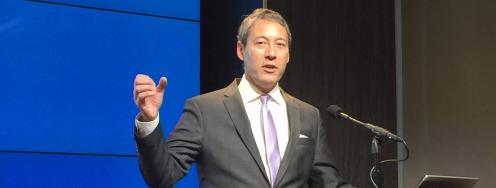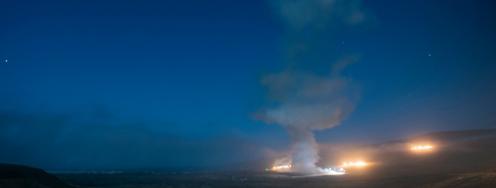Sequestration Squeezing Nuclear Budgets
On the radar: Sub and bomber under budget pressure; World’s deadliest subway; Eyes over N. Korea; Deterrence without the triad; What’s going on in North Korea; and Visit the beautiful... DMZ.
On the radar: Sub and bomber under budget pressure; World’s deadliest subway; Eyes over N. Korea; Deterrence without the triad; What’s going on in North Korea; and Visit the beautiful... DMZ.
March 14, 2013 | Edited by Benjamin Loehrke and Alyssa Demus
Budgets pitting needs versus wants - Funding for the Ohio-class replacement submarine and new Long Range Strike Bomber programs are going to feel the effects of sequestration, said Christine Fox, head of the Pentagon’s office of Cost Assessment and Program Evaluation. Asked what the Pentagon can do to keep funding those programs, Fox noted she did not have an easy answer.
--“What I will tell from a CAPE perspective is our biggest problem is our own delusional requirements and desirements for things we can't really afford," said Fox. Colin Clark at Aol Defense has the story. http://aol.it/10Sfau6
Doomsday express - As part of an Air Force effort to modernize underground nuclear silos, the service’s Nuclear Weapons Center will fund research exploring options to construct “a sprawling network of underground subway tunnels to shuttle” nuclear weapons, writes Danger Room’s Robert Beckhusen.
-- However, “the costs associated with developing and operating such a system would be enormous and completely out of sync with the fiscal realities of this nation. Even a mobile system is probably unrealistic. I think the most likely, and probably only realistic option short of scrapping the land-based leg of the deterrent, is to simply extend the life of the existing Minuteman III ICBM,” Hans Kristensen of the Federation of American Scientists told Beckhusen. Full story here. http://owl.li/iVBwA
Welcome to Early Warning - Subscribe to our morning email or follow us on twitter.
--Have a tip or feedback for the editor? Email earlywarning@ploughshares.org earlywarning@ploughshares.org. Want to support this work? Click here.
No near-term test, but... - North Korea’s rocket test facilities show no signs of launches in the next month, but might show activity consistent with preparations for another satellite launch later in spring. Nick Hansen at 38 North offers new satellite imagery analysis. http://owl.li/iVHvb
Ditching the triad - “The new mission for U.S. nuclear weapons...should be one of minimum deterrence, meaning the prevention of a major nuclear attack on America with a small nuclear force...targeted only for retaliation for the attempted destruction of the United States and nothing else,” writes Tom Nichols in The Diplomat.
--With a minimum deterrent, the U.S. would “no longer need a triad” - the sea and land based legs could be scaled back, and the next-generation bomber could be purely-conventional. As policymakers consider options for further reductions, its important to remember the U.S. strategic deterrent is a “last resort,” not a “tool of statecraft.” says Nichols. Full article here. http://bit.ly/10LQNdQ
Tweet - @strobetalbott: Strong, clear piece by Joe @Cirincione on Obama's Nuclear Future | Foreign Affairs http://t.co/96939SylPk
Power down -“Iran: Bushehr nuclear power plant taken off line” from AFP. Full story here. http://owl.li/iVmxG
Tweet - @MarkHibbsCEIP: Hibbs in Korea Herald: "US position on US-ROK nuke agreement ultimately about confidence #ROK will stay in the #NPT." http://t.co/mTmuqpJVrB
Pundit Roundup: What’s going on in North Korea?
--“No one knows for sure what is going on [in North Korea],” writes Fareed Zakaria in The Washington Post. He notes that China is showing increasing frustration with the North. That may offer an opportunity for the U.S. and China to intensify conversations about how to manage Pyongyang and stability on the Korean Peninsula. http://wapo.st/12SWQT2
--Pyongyang’s threats have rattled more nerves than usual. Fred Kaplan at Slate suggests this is not because of the content of the elevated rhetoric. It’s all that “plus the fact that Kim Jong-un—about 29 and in power for barely a year—is still an unknown quantity.” http://slate.me/151lZWR
--North Korea’s threatening rhetoric “was motivated less by international politics than by domestic concerns: North Korea’s new hereditary leader, Kim Jong-un, may have been stoking fears of a foreign threat primarily to dampen political unrest at home,” writes Sheila Miyoshi Jager in The New York Times. http://nyti.ms/YdoJNM
--“How should the international community respond when a nation consistently ignores red lines? What policy options exist when patience finally runs out?” asks David Ignatius. He doesn’t have answers either, but suggests “Counting on North Korean restraint has been a bad bet. It may be wiser to assume the worst and plan accordingly.” In The Washington Post. http://wapo.st/ZCpyzN
--“I suspect that the reason for all of the amping up has to do with domestic politics on all sides. On the one hand, Kim Jong Un is playing to his own military base. On the other hand, North Korea is also trying to suss out the policy preferences and resolve of the new leadership in both South Korea and China,” offers Dan Drezner at Foreign Policy. http://atfp.co/13V7ojQ
Events:
--P5+1 (China, France, Germany, Russia, United Kingdom and United States) technical experts continue talks with Iran on its nuclear program. Istanbul. March 18-19.
--"Globalizing Reagan’s INF Treaty: Easier Done Than Said?" David Cooper, U.S. Naval War College, March 19, 9:00-10:30 a.m. @ George Washington University, Lindner Family Commons, 1957 E. St., NW, 6th floor. RSVP here. http://owl.li/iVGMM
--”Sustaining U.S. Nuclear Forces on a Tight Budget.” Barry Blechman, Russell Rumbaugh, Tom Collina, and Daryl Kimball. March 19, 9:30-11:00 a.m. @ Carnegie. Details and RSVP. http://bit.ly/XUNrVs
--"2013 Public Policy and Nuclear Threats Winter Conference.” Linton Brooks, former administrator, NNSA, and 18 other speakers. March 22-23. @ Univ. of California Washington Center, 1608 Rhode Island Ave., NW. Details here (pdf). http://owl.li/iVIvo
Dessert:
War zone, tourist trap - “The Koreas' border can seem a surreal place at the best of times – part tourist trap, part war zone. An amusement park, fast-food joints and kitschy souvenir shops mix with an ever-present Cold War tension that is higher now than it has been in years,” writes Foster Klug at AP on the “busloads of tourists” gawking at the world’s most fortified border. http://huff.to/Yu6we0



